1 of 9
Downloaded 21 times
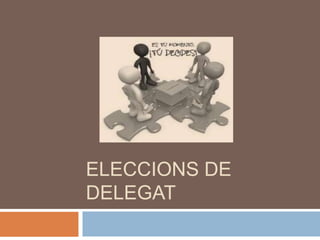
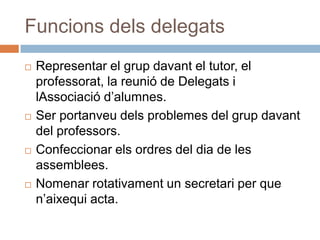
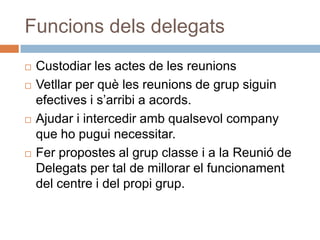
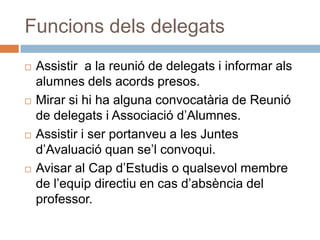


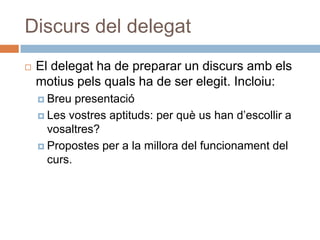
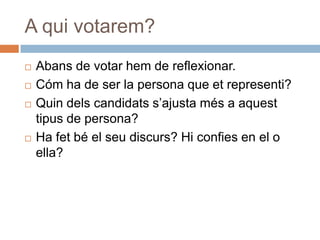
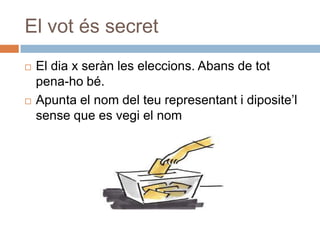
Ad
Recommended
Tema 5. metalls, pl├Āstics i altres materials d'├║s t├©cnic
Tema 5. metalls, pl├Āstics i altres materials d'├║s t├©cnicRicard
╠²
Metalls, pl├Āstics i materials cer├ĀmicsĘĪ▓§│┘▓╣╗Õ├Ł▓§│┘Š▒│”▓╣
ĘĪ▓§│┘▓╣╗Õ├Ł▓§│┘Š▒│”▓╣Joan Picas i Casanovas
╠²
Senzilla presentaci├│ per a Prim├Āria sobre ĘĪ▓§│┘▓╣╗Õ├Ł▓§│┘Š▒│”▓╣, amb activitats.La planificacio╠ü textual
La planificacio╠ü textual Guida All├©s Pons
╠²
Recursos per a millorar el proc├®s de planificaci├│ textual dels nostres alumnesPresentaci├│ President AMPA reunio╠ü 7_11_2016
Presentació President AMPA reunió 7_11_2016oriolllop
╠²
Detall de les activitats previstas durant el cursReuni├│ delegats 17 18
Reuni├│ delegats 17 18cpsoncanals
╠²
Funcions dels delegats de curs, Ordre del dia i acords, propostes preses.Introducing yourself
Introducing yourselfenglishforyou2
╠²
This document provides a model for introducing yourself to others in a classroom setting. It includes templates for exchanging basic contact information like name, phone number, email, favorite subjects, and hobbies. It also provides guidance on spelling names clearly using phonetic spelling if needed. Students are instructed to make name cards with their information and then collect the same data from other students in the class.Think marketing
Think marketingenglishforyou2
╠²
This document provides links to three online videos about marketing vocabulary and concepts. The first video introduces common marketing terminology. The second and third videos discuss foundational marketing concepts, with the second focusing on ideas like market segmentation, targeting, and positioning and the third exploring additional principles such as the marketing mix and product life cycle.Claims and complaints
Claims and complaintsenglishforyou2
╠²
This document discusses claims and complaints procedures for hotels. It provides phrases to use when receiving complaints from customers, such as apologizing and offering solutions. It also discusses the process for handling formal claims, which may involve compensation, refunds or contacting local consumer agencies. Complaints can be lodged in person, by telephone or letter. Sample phrases are given for requesting information, complaining about issues, apologizing or offering assistance in letters regarding customer complaints and claims.Think Marketing
Think Marketingenglishforyou2
╠²
This document provides links to three videos about marketing vocabulary and concepts. The first video introduces common marketing vocabulary. The second and third videos discuss key marketing concepts, such as the marketing mix and the product life cycle.Part 2
Part 2englishforyou2
╠²
The document discusses assessing and benchmarking customer service quality. It outlines 13 main criteria for measuring customer service quality including reliability, consistency, health and safety, accessibility, and more. It also discusses getting customer feedback and using mystery customers to assess the actual customer service provided compared to documented policies and criteria. Benchmarking involves comparing a company's performance to other similar organizations.More Related Content
What's hot (6)
ĘĪ▓§│┘▓╣╗Õ├Ł▓§│┘Š▒│”▓╣
ĘĪ▓§│┘▓╣╗Õ├Ł▓§│┘Š▒│”▓╣Joan Picas i Casanovas
╠²
Senzilla presentaci├│ per a Prim├Āria sobre ĘĪ▓§│┘▓╣╗Õ├Ł▓§│┘Š▒│”▓╣, amb activitats.La planificacio╠ü textual
La planificacio╠ü textual Guida All├©s Pons
╠²
Recursos per a millorar el proc├®s de planificaci├│ textual dels nostres alumnesSimilar to Eleccions de delegat (10)
Presentació President AMPA reunió 7_11_2016
Presentació President AMPA reunió 7_11_2016oriolllop
╠²
Detall de les activitats previstas durant el cursReuni├│ delegats 17 18
Reuni├│ delegats 17 18cpsoncanals
╠²
Funcions dels delegats de curs, Ordre del dia i acords, propostes preses.Ad
More from englishforyou2 (16)
Introducing yourself
Introducing yourselfenglishforyou2
╠²
This document provides a model for introducing yourself to others in a classroom setting. It includes templates for exchanging basic contact information like name, phone number, email, favorite subjects, and hobbies. It also provides guidance on spelling names clearly using phonetic spelling if needed. Students are instructed to make name cards with their information and then collect the same data from other students in the class.Think marketing
Think marketingenglishforyou2
╠²
This document provides links to three online videos about marketing vocabulary and concepts. The first video introduces common marketing terminology. The second and third videos discuss foundational marketing concepts, with the second focusing on ideas like market segmentation, targeting, and positioning and the third exploring additional principles such as the marketing mix and product life cycle.Claims and complaints
Claims and complaintsenglishforyou2
╠²
This document discusses claims and complaints procedures for hotels. It provides phrases to use when receiving complaints from customers, such as apologizing and offering solutions. It also discusses the process for handling formal claims, which may involve compensation, refunds or contacting local consumer agencies. Complaints can be lodged in person, by telephone or letter. Sample phrases are given for requesting information, complaining about issues, apologizing or offering assistance in letters regarding customer complaints and claims.Think Marketing
Think Marketingenglishforyou2
╠²
This document provides links to three videos about marketing vocabulary and concepts. The first video introduces common marketing vocabulary. The second and third videos discuss key marketing concepts, such as the marketing mix and the product life cycle.Part 2
Part 2englishforyou2
╠²
The document discusses assessing and benchmarking customer service quality. It outlines 13 main criteria for measuring customer service quality including reliability, consistency, health and safety, accessibility, and more. It also discusses getting customer feedback and using mystery customers to assess the actual customer service provided compared to documented policies and criteria. Benchmarking involves comparing a company's performance to other similar organizations.Cs 4
Cs 4englishforyou2
╠²
This document discusses different types of customers in the leisure and tourism industry. It identifies two main categories of customers: 1) internal customers, which include employees and suppliers within an organization, and 2) external customers. External customers are further broken down by age group, cultural background, and specific needs. Age groups range from children to senior citizens. Cultural background and traditions must be respected to avoid offense. Specific needs may include requirements related to sight, hearing, mobility, language, diet, literacy and more. Customers with specific needs should not be patronized and should receive the same respect and courtesy as other customers.Cs 3
Cs 3englishforyou2
╠²
This document discusses the importance of good communication for customer service. It provides tips for various types of communication including:
- Communicating with individuals and groups, emphasizing making eye contact, addressing customers by name, and giving direct answers.
- Making a good first impression, noting customers form an impression within 30 seconds based on appearance, attitude, and behavior.
- Additional tips for communicating via telephone, in writing, verbally, and non-verbally, emphasizing being polite, friendly, clear, and giving undivided attention.
- The importance of feedback loops among staff is also discussed.customer service1
customer service1englishforyou2
╠²
1. Customer service is defined as meeting customer expectations and producing customer satisfaction through systems that understand customer needs.
2. Key aspects of customer service include understanding what customers expect, gathering customer information, being easily contactable, having well-trained staff, responding quickly, allowing easy complaints, and involving customers in development.
3. Effective customer service requires training staff, monitoring satisfaction, and creating a customer-focused culture through tools like a customer charter and benchmarking.4
4englishforyou2
╠²
This document provides guidance on effective business communication techniques, including correspondence, telephone communication, and interviews. Some key tips include thinking before speaking, establishing clear messages, choosing the right communication channel, and maintaining a positive tone. When writing correspondence, it is important to capture attention, explain the purpose clearly, and check drafts before sending. When speaking on the phone, properly identify yourself and the company, be prepared, and take accurate notes. For interviews, prepare relevant information in advance and listen carefully to understand the reason for the meeting.1, 2, 3 Com
1, 2, 3 Comenglishforyou2
╠²
The document discusses the elements and types of communication, emphasizing its importance in the hospitality sector. Effective communication involves various forms such as auditory, visual, tactile, and multichannel, as well as understanding the roles of sender, receiver, message, medium, and feedback. It highlights that successful communication is crucial for customer service, requiring attention to different senses, mutual needs, and a clear purpose.Com Or Info
Com Or Infoenglishforyou2
╠²
Communication is one of the most important and complex aspects of human life as it allows for the exchange of information and ideas between individuals. While communication provides information, it also involves more than just the transmission of facts, as it is a process that enables understanding between people through the sharing of meanings and ideas. Effective communication requires understanding not only what is said but also the context and intent behind the message.Communication for Customer service
Communication for Customer serviceenglishforyou2
╠²
The document discusses various aspects of communication, particularly in the context of the hospitality industry, emphasizing the importance of effective communication techniques for customer service. It breaks down the elements and types of communication, including sender, receiver, message, channel, and feedback, and illustrates how to apply these concepts through correspondence, telephoning, interviews, and presentations. Additionally, techniques for conveying messages clearly and positively are outlined to enhance customer interactions.8.10.09
8.10.09englishforyou2
╠²
This document provides instructions and content for a class on communication and customer service. It includes slides and practices for students to review concepts of different types of communication according to the senses used and people involved. Students are asked to choose a video on effective communication and prepare a short presentation with notes and pictures on the selected aspect.The Story Of The River
The Story Of The Riverenglishforyou2
╠²
Fatima refuses to take Leo home unless he accepts their relationship as it is. Leo leaves angrily and walks alone through the forest at night. The document asks what Leo's reaction is and why, and asks the reader to rank who is least to most guilty between Leo, Fatima, Marc and Sara according to their own opinion.H&D
H&Denglishforyou2
╠²
H&D is a textile company founded in 2000 based in Barcelona, Spain with 15,000 employees across outlets in major Spanish towns. They design and produce high quality clothing for men and women, including trousers, t-shirts, and other modern styles. With an annual turnover of 18 million euros and profits of 9 million, H&D competes successfully against other brands through television, magazine, and bus advertisements. Looking ahead, H&D plans to expand into new international markets in Italy and France while negotiating partnerships to boost advertising campaigns.Ad
Eleccions de delegat
- 2. Funcions dels delegats ’é© Representar el grup davant el tutor, el professorat, la reuni├│ de Delegats i lAssociaci├│ dŌĆÖalumnes. ’é© Ser portanveu dels problemes del grup davant del professors. ’é© Confeccionar els ordres del dia de les assemblees. ’é© Nomenar rotativament un secretari per que nŌĆÖaixequi acta.
- 3. Funcions dels delegats ’é© Custodiar les actes de les reunions ’é© Vetllar per qu├© les reunions de grup siguin efectives i sŌĆÖarribi a acords. ’é© Ajudar i intercedir amb qualsevol company que ho pugui necessitar. ’é© Fer propostes al grup classe i a la Reuni├│ de Delegats per tal de millorar el funcionament del centre i del propi grup.
- 4. Funcions dels delegats ’é© Assistir a la reuni├│ de delegats i informar als alumnes dels acords presos. ’é© Mirar si hi ha alguna convocat├Āria de Reuni├│ de delegats i Associaci├│ dŌĆÖAlumnes. ’é© Assistir i ser portanveu a les Juntes dŌĆÖAvaluaci├│ quan seŌĆÖl convoqui. ’é© Avisar al Cap dŌĆÖEstudis o qualsevol membre de lŌĆÖequip directiu en cas dŌĆÖabs├©ncia del professor.
- 5. C├▓m ha de ser un delegat? Bon Mal delegat delegat
- 6. C├▓m ha de ser un delegat? Bon delegat Mal delegat Honrat Egoista Solidari Passota Observador Indec├Łs Responsible Subjectiu Cr├Łtic Interessat Bon company Manipulador
- 7. Discurs del delegat ’é© El delegat ha de preparar un discurs amb els motius pels quals ha de ser elegit. Incloiu: ’éż Breu presentaci├│ ’éż Les vostres aptituds: per qu├© us han dŌĆÖescollir a vosaltres? ’éż Propostes per a la millora del funcionament del curs.
- 8. A qui votarem? ’é© Abans de votar hem de reflexionar. ’é© C├│m ha de ser la persona que et representi? ’é© Quin dels candidats sŌĆÖajusta m├®s a aquest tipus de persona? ’é© Ha fet b├® el seu discurs? Hi confies en el o ella?
- 9. El vot ├®s secret ’é© El dia x ser├Ān les eleccions. Abans de tot pena-ho b├®. ’é© Apunta el nom del teu representant i dipositeŌĆÖl sense que es vegi el nom